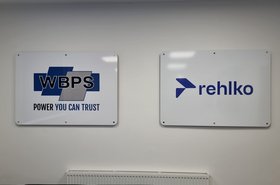While data centers have made major steps toward more sustainable practices, when it comes to Scope 3 emissions, it's been a lot of wheel spinning. While they are incredibly useful for Scope 3 benchmarking, supply chain management, and even marketing strategy, EPDs aren’t common among data center suppliers.
Historically, vendors may have avoided offering EPDs due to concerns about the complexity and cost of creating them. However, these reasons are becoming less valid as the importance of sustainability in both data center support and purchasing decisions rises.
Scope 3 woes
Green data center initiatives are gaining traction, with increasing importance placed on sustainability by internal stakeholders – shareholders, investors, and employees alike – as well as external parties like lawmakers, regulatory agencies, and customers.
As Environmental, Social, and Governance (ESG) programs become more prevalent, sustainability reporting is rising in popularity, encompassing various factors such as waste, water, and heat management. However, in the rapidly evolving data center industry, staying updated on environmental initiatives can be challenging. If you're aiming to manage your facility’s emissions more effectively, understanding and tracking your consumption is the crucial first step.
While the GHG Protocol’s three-scope framework is useful for data centers to track sustainability metrics, Scope 3 emissions – which are often a significant portion of total emissions – are particularly challenging to calculate.
Scope 3, or the Corporate Value Chain Standard, encompasses indirect emissions outside a data center’s direct operations and energy use. This is due to its focus on indirect activities not directly controlled by the data center, covering all carbon emissions associated with purchased goods and services.
These emissions include those from external services like Amazon AWS or Microsoft Azure, as well as from data center construction, employee travel, waste management, and supply chain activities.
So, while much progress has been made in the areas of Scope 1 and 2 emissions, data center improvements with the much trickier area of Scope 3 emissions have been lagging far behind.
While the methods for calculating and reporting Scope 3 emissions are constantly evolving with new research and improved practices, data centers can only go so far to deal with the difficulty and complexity of the process.
Data center industry vendors must be the ones to step up. One crucial way that suppliers can do so is the creation and distribution of environmental product declarations.
The EPD edge
In a nutshell, environmental product declarations (EPD) are important for two reasons. Firstly, they offer standardization. EPDs are governed by strict standards and regulations, where product category rules issue comparable results because the calculation methods and reporting guidelines are the same.
In fact, EPDs are managed by independent agencies known for developing and overseeing the product category rules to ensure the EPD report has comparable information. So, through an EPD a data center gains the assurance of information accuracy, enabling informed, confident choices when selecting a vendor.
The second reason EPDs are so valuable for data centers is the transparency they provide. No EPD can be created without a full lifecycle analysis. As a result, the EPD shows a data center operator what goes into a piece of equipment, how it's produced, and the environmental footprint related to every stage of production.
To ensure veracity, EPDs must also be verified by a pre-approved and independent expert before they can be issued. Information cannot be hidden or downplayed. When it comes to making informed decisions, EPDs are an incredible tool, providing maximum clarity and trustworthiness.
Access to EPDs can inform design and product development decisions, material and procurement practices, and ESG policy creation. Increasingly, they are being required for certifications like LEED and BREEAM to provide a foundation for sustainability-related qualifications for facilities. So, if they are so helpful, why aren’t there more of them out there?
The manufacturer’s dilemma
The reason EPDs are uncommon for data center suppliers is simple: They aren’t easy to achieve. For a highly manufactured product, there are several hurdles to achieving an EPD. The many components and processes each come with their own impact evaluation. Developing detailed data on manufacturing activities, raw materials, transport, and end-of-life disposal takes time and effort.
For a piece of equipment such as a diesel generator, measuring impacts such as emissions, energy consumption, and resource depletion can be even more complex. This involves not only assessing the direct impacts of the product but also considering indirect impacts like energy used during operation. This kind of detailed analysis, not to mention third-party verification, can be expensive and time-consuming.
Increasingly, though, those reasons for avoiding EPDs are becoming less valid.
As the data center industry grows, the public demand for transparency and sustainability will grow with it. As data centers strive to update and upgrade their operations to meet progressive ESG goals, vendors must keep up in order to properly support their clients. The prioritization of environmental responsibility isn’t going away, and neither is the quest for increasingly detailed information on the life cycle impacts of products.
The shift towards greater demand for EPDs reflects a broader industry trend towards accountability, making it increasingly imperative for manufacturers to embrace this standard.
In the construction industry broadly, EPDs have shown massive growth in recent years. In 2024, about 120,000 EPDs for construction products exist. However, for data centers there simply isn’t enough EPD activity for data center operators to adequately manage effective ESG programs.
Last month, the iMasons Climate Accord called for greater adoption of EPDs, serving as both a warning flag and a step in the right direction. As a sign of progress, Rehlko has responded by issuing an industry-first EPD for one of its backup generator models through the PEP Ecospassport program.
Sustainability is an industry-wide responsibility, and if the green data movement is to flourish then all parties need to contribute. Data center industry suppliers must become further engaged in an ongoing effort to standardize practices across different products and regions, and the development and proliferation of EPDs is a great way to do so.
It will take work, but it's the best way forward to a greener future.
More about Rehlko
-

Sponsored WBPS’s partner in power, Kohler Energy, announces rebrand
Kohler Energy announces its rebrand to Rehlko, serving to highlight an exciting new chapter for the company
-

Kohler Energy rebrands to Rehlko
After energy unit was majority acquired by Platinum Equity earlier this year
-


